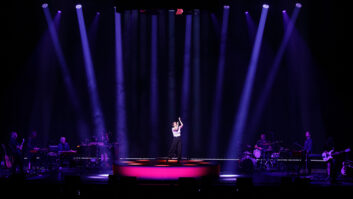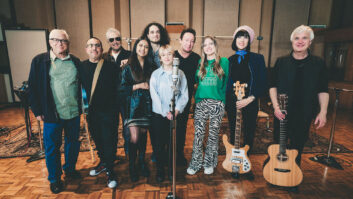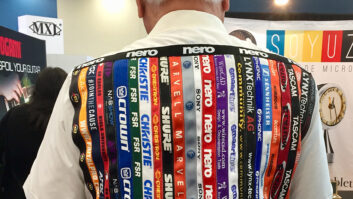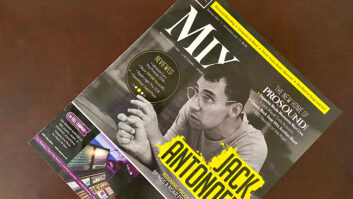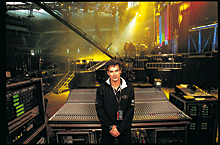
We use acoustic guitars with onboard batteries driving the pickups on a number of Ricky’s songs. When these feed wireless systems using companders, the guitar’s sound ends up getting compressed to the point where it’s not very musical. The Lectrosonics [IS400] doesn’t use a compander, so the guitar sounds perfectly natural — big and full, with a rich, musical tone. Wireless systems tend to be heavily dependent upon a straight line of sight for optimum performance, and while we make every effort to maintain this, our guitarists move all over the place, so that’s not always possible. Even when they’re beyond the arc, we’ve had great reception with the IS400. The guitarists wear as many as three beltpacks — for a wireless mic, in-ear monitor and the IS400 for their instrument. Having three wireless systems in such close proximity can create some real headaches, but not once has the Lectrosonics gear created any difficulties.
—Raphael Alkins

With loud rock bands, capturing the true guitar tone is a difficult part of producing good in-ear mixes. I tend to use a direct line, but if DI is not an option, go for a bright-sounding mic. Really loud amps make the problem worse. Guitar bleed in the vocal mics can wash out the guitar mics, making the guitar sound distant in the mix. Using a vocal mic with better rejection or reversing the phase of the guitar line or vocal mic can sometimes tame the problem. Also, EQ settings for in-ear mixes are different and much more dramatic than what’s needed in the wedges. Don’t be afraid to roll the highpass up above 250 Hz and try boosting 4 kHz for a little added presence.
—Michael Souder

I love using large-diaphragm condenser mics on guitar cabinets to get that crisp, but thick rock guitar sound. The strangest things can happen during rock shows: losing phantom power to cables suddenly “breaking” or coming out, guitar amps blowing up or even mics going down in the middle of shows. I always have a DI feed from a guitar amp simulator at FOH. I can quickly bring up the simulator channel and the show can continue. If the problem is caused by an amp, this method is also a benefit at monitor world, as the band will only have a momentary loss of the instrument in their mix and onstage instead of waiting for the problem to be combated.
—Russell Giroux
PLAY:
Tell us your tip

